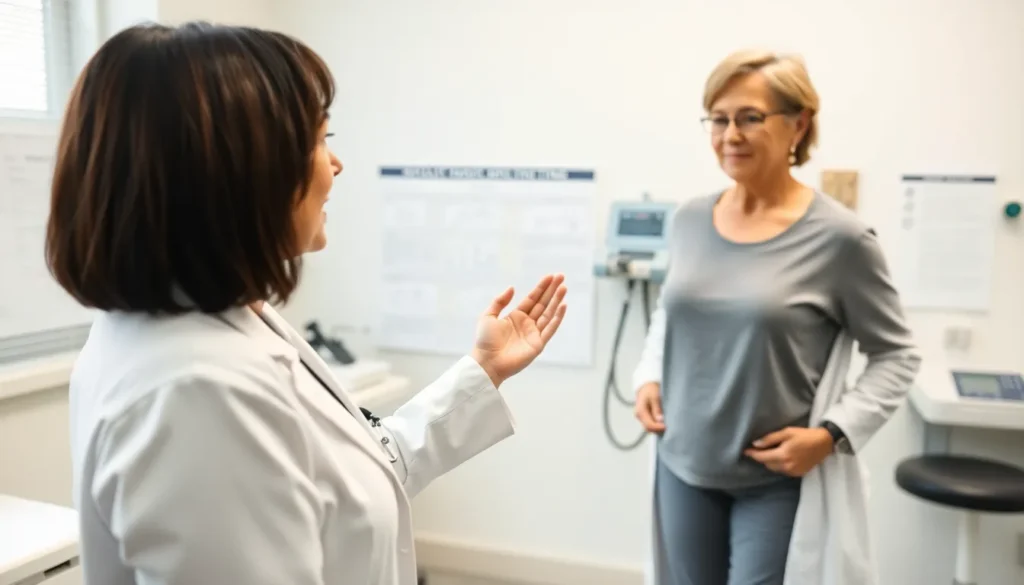Homorzopia disease might sound like a character from a sci-fi movie, but it’s a real condition that can throw a wrench in anyone’s day. Imagine waking up one morning only to discover your sense of balance has decided to go on vacation without you. Testing for this quirky ailment is crucial, and luckily, it doesn’t require a secret decoder ring or a trip to the moon.
In this guide, he’ll explore the ins and outs of testing for homorzopia disease. From simple at-home tests to expert evaluations, he’ll cover everything you need to know to keep your balance in check. So grab your favorite snack, and let’s dive into the world of homorzopia testing—because who said learning about health can’t be a little fun?
Table of Contents
ToggleUnderstanding Homorzopia Disease
Homorzopia disease disrupts balance, posing challenges in daily activities. Symptoms typically include dizziness, instability, and difficulty walking. Individuals may also experience visual disturbances that further complicate their sense of equilibrium.
Diagnosis relies on thorough assessments. Medical professionals often start with a detailed patient history, focusing on symptoms and their onset. Following this, they conduct physical examinations to evaluate balance and coordination. Specialized tests such as the Romberg test or the Fukuda stepping test provide critical insights into the disease’s impact on balance.
Advanced imaging techniques, like MRI or CT scans, help rule out other conditions. These scans reveal structural issues that could contribute to balance problems. Additionally, blood tests may assess underlying causes such as infections or metabolic disorders.
In some cases, referral to an audiologist becomes necessary. Audiology evaluations can determine if inner ear dysfunction plays a role in balance issues. Collaboration among healthcare providers enhances diagnostic accuracy and ensures a comprehensive approach.
Simple at-home tests also assist in monitoring balance. Patients may perform a one-leg stand or a tandem walk as initial screenings. These activities, while basic, offer essential insights into daily balance capabilities.
Education about the disease is vital. Individuals diagnosed with homorzopia should understand the nature of their symptoms. Tracking changes in symptoms helps healthcare providers adapt treatment plans effectively.
Common Symptoms of Homorzopia Disease

Homorzopia disease presents various symptoms that can significantly affect daily life. Identifying these symptoms early aids in timely diagnosis and intervention.
Visual Disturbances
Visual disturbances often manifest as blurred vision, double vision, or difficulty focusing. These can arise due to the disruption of the brain’s ability to process visual information effectively. Individuals may experience sensitivity to light or visual field loss, which complicates their ability to navigate environments. Tracking these visual changes can assist healthcare providers in determining the impact on balance and coordination. Regular monitoring of visual symptoms leads to better management of the condition.
Physical Symptoms
Physical symptoms include dizziness, instability, and difficulty walking. People with homorzopia disease often report feeling unsteady or off-balance, especially when changing positions or walking on uneven surfaces. Muscle weakness can accompany these symptoms, contributing to falls or trips. Fatigue frequently intensifies these issues, making routine activities challenging. Recognizing and documenting these physical signs provides crucial information for healthcare professionals to develop effective treatment strategies. Regular assessments can help monitor the progression of symptoms and adjust care plans as necessary.
Diagnostic Methods for Homorzopia Disease
Diagnosing homorzopia disease involves a combination of clinical evaluations and laboratory tests to ensure accuracy.
Clinical Evaluation
A thorough clinical evaluation begins with a detailed patient history. Doctors inquire about symptoms and their onset, exploring aspects like dizziness and instability. Physical examinations include tests that assess balance and coordination. The Romberg test evaluates postural stability, while the Fukuda stepping test measures balance during movement. These assessments help identify the severity of the disease. In some cases, a referral to an audiologist becomes necessary to check for inner ear issues. Collectively, these evaluations form a comprehensive understanding of the patient’s condition.
Laboratory Tests
Laboratory tests play a crucial role in diagnosing underlying causes of homorzopia disease. Blood tests can reveal metabolic disorders or vitamin deficiencies that may contribute to symptoms. Advanced imaging techniques, such as MRI or CT scans, help visualize brain structures and rule out other potential conditions. By combining these tests with clinical evaluations, healthcare professionals achieve a more accurate diagnosis. Access to this information aids in developing effective treatment plans tailored to the patient’s specific needs.
Advanced Testing Techniques
Advanced testing techniques provide deeper insights into diagnosing homorzopia disease. These methods enhance understanding of the condition and allow for more accurate treatment plans.
Genetic Testing
Genetic testing assesses hereditary influences on homorzopia disease. Specific genes linked to balance and coordination disorders may be identified through this testing. Panel tests evaluate multiple genes associated with vestibular function, providing critical information for clinicians. Individuals with a family history of balance disorders might benefit most from this evaluation. Results from genetic tests can help tailor personalized treatment approaches, ensuring effective management of symptoms. Due to the complexity of genetic factors, it’s important for patients to discuss findings with healthcare providers.
Imaging Studies
Imaging studies, such as MRI and CT scans, reveal structural abnormalities in the brain and inner ear. These advanced techniques visualize potential lesions or anomalies that could contribute to balance issues. Radiologists analyze the scans for signs of past injuries, tumors or conditions that affect balance. An MRI provides high-resolution images, allowing for detailed assessments of brain structures. CT scans offer quick imaging, useful in emergency situations. Timely imaging studies contribute significantly to developing comprehensive treatment plans tailored to individual patient needs.
Understanding how to test for homorzopia disease is crucial for those experiencing balance issues. By utilizing a combination of at-home assessments and professional evaluations, individuals can take proactive steps toward managing their health. Recognizing symptoms and seeking timely diagnosis can lead to effective treatment strategies tailored to each person’s needs.
As advancements in testing techniques continue to emerge, staying informed about options like genetic testing and advanced imaging will empower patients and healthcare providers alike. This knowledge fosters a collaborative approach to addressing homorzopia disease, ensuring better outcomes for those affected. Prioritizing health and awareness is the key to navigating this condition effectively.








